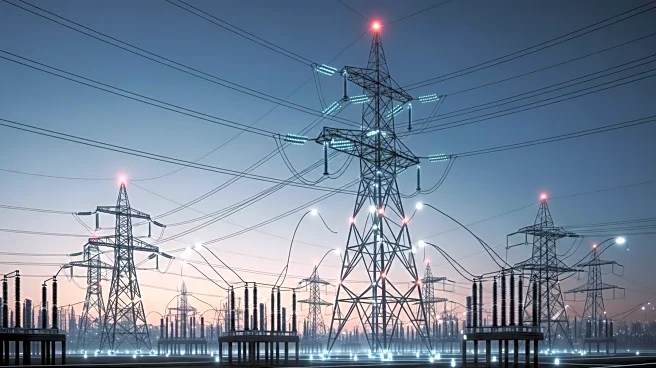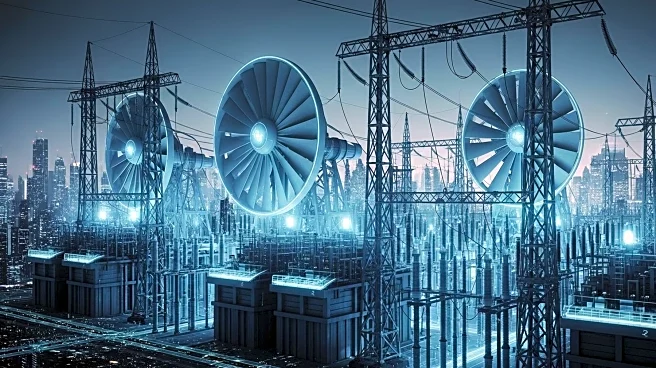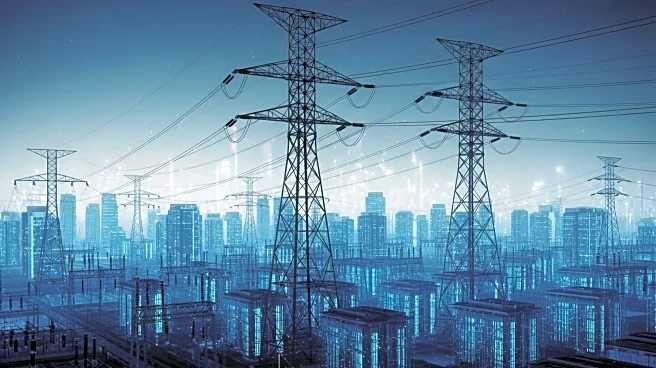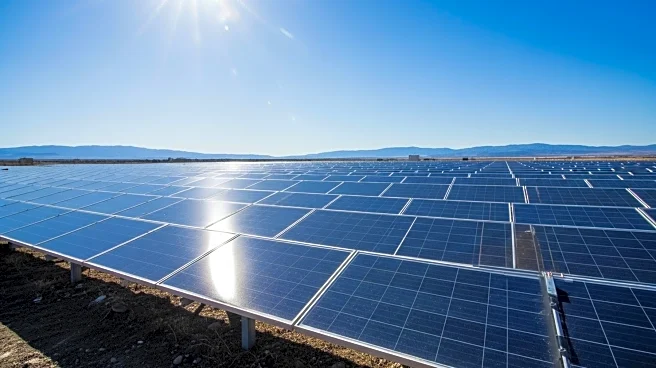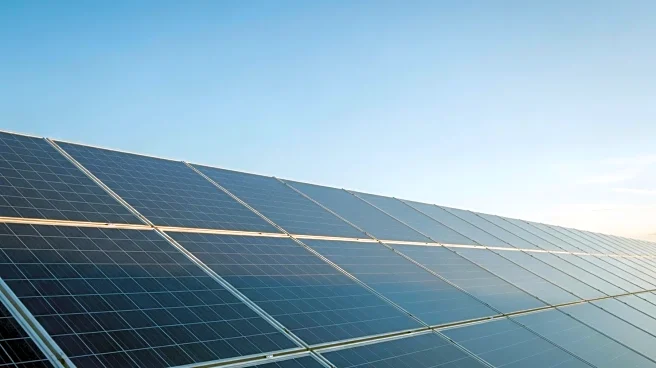What's Happening?
Investment in transmission infrastructure in the United States is projected to grow significantly, reaching $573.7 billion by 2030, up from $372.6 billion in 2025. This represents a compound annual growth rate of 9.2% between 2025 and 2030. The increase is driven by several factors, including government initiatives, the integration of renewable energy sources, and the need for enhanced grid resilience and efficiency. Technologies such as smart meters, artificial intelligence (AI), and the Internet of Things (IoT) are being adopted to improve the functionality of smart grids. AI, in particular, is being utilized for real-time data analysis, demand forecasting, predictive maintenance, and the integration of renewable energy sources, optimizing power flow and balancing supply and demand.
Why It's Important?
The projected growth in transmission infrastructure investment is crucial for the development of smart grids, which are essential for a reliable and sustainable power supply. As the U.S. continues to integrate renewable energy sources, the demand for efficient and resilient power transmission systems increases. The adoption of advanced technologies like AI and IoT in smart grids can lead to fewer outages, reduced energy waste, and improved grid reliability. This investment is also significant for data centers, which play a vital role in the evolution of smart grids due to their substantial energy demands. By refining energy consumption and increasing carbon consciousness, data centers can contribute to a stable and sustainable power infrastructure.
What's Next?
As the investment in transmission infrastructure grows, stakeholders including government agencies, energy companies, and technology providers are likely to continue developing and implementing advanced technologies to enhance grid efficiency and resilience. The integration of renewable energy sources will be a key focus, with efforts to optimize power flow and automate responses to grid instabilities. Data centers will continue to refine their energy consumption practices, potentially leading to innovations in energy storage systems and grid-interactive technologies. These developments will be crucial in meeting the rising demand for smart grids and ensuring a sustainable energy future.
Beyond the Headlines
The expansion of transmission infrastructure investment highlights the broader shift towards sustainable energy practices and the increasing role of technology in the energy sector. Ethical considerations regarding energy consumption and carbon emissions are becoming more prominent, with stakeholders focusing on reducing environmental impact. The integration of AI and IoT in smart grids also raises questions about data privacy and security, as these technologies rely on real-time data collection and analysis. Long-term, the growth in transmission infrastructure investment may lead to significant changes in energy policy and regulatory frameworks, as the U.S. seeks to balance technological advancement with environmental sustainability.

